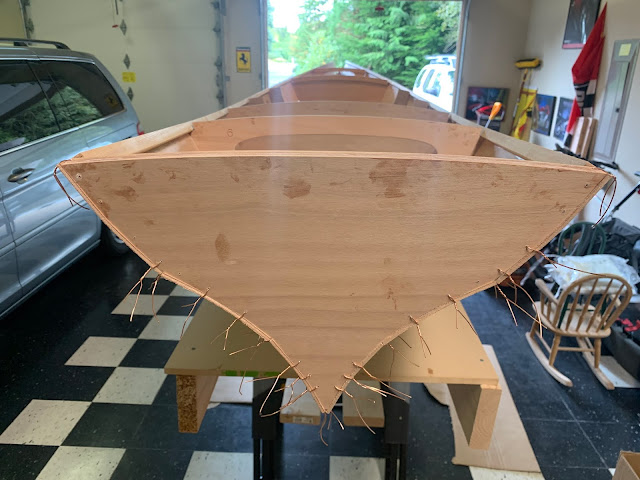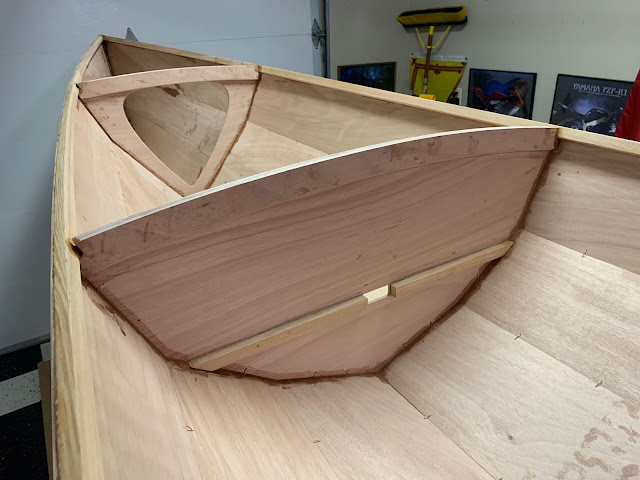Big changes since my last post... the hull of the Expedition Wherry is now wired together and the epoxying has begun.
I'm doing things a bit differently from the manual, or at least I'm adding some things that the manual doesn't mention. So if you're following along and mine looks different than what the manual shows, you'll know why.
Since my last post I have scarfed the sheer clamps together and then epoxied them to the #3 panels at the sheer line. I think I used around 80 clamps!
Then I set up the frames that the hull would be sitting on while the stitching was going on. I snapped a chalk line down the center of my table. Then I drew lines perpendicularly down from the centers of the frames. Finally, I mounted the frames on the center line.
Then I wired on the panels. Here's how it looks after several hours of wiring.
This was after the first two panels were added.
Then I added the #3 panels with the sheer clamps. The transom went on much easier than I expected.
I had to drill holes into the sides of the transom doubler to hold the tops in.
One thing I'm a bit surprised about in the manual is the lack of specific ideas and steps on certain things. I already mentioned that CLC doesn't really give very detailed instructions on fiberglassing (more on that in future posts too). But here's an idea that is commonly used in other stitch and glue boats, and that is to use large push-pins to hold panels flush to each other.
If a panel just won't stay flush, you simply move the panel out or in and then push a push-pin into the edge of the panel to hold it either out or in. In the picture below, it looks like the pin isn't doing much, but if I pulled it out, the bottom panel would pop out further than the #2 panel. Cool idea, huh?! Why doesn't CLC mention that for their first-time builders?
CLC also suggests that you mix up a large batch of thickened epoxy and add huge fillets along all the seams. I'm only doing just enough to hold the hull together. Then tomorrow I will flip the boat over and run epoxy along the outside seams. This will hold the entire hull together and I won't have the thickened epoxy seams to look at. Structurally, it shouldn't be an issue because it will really be the 6 oz. fiberglass cloth inside and out that really holds the panels together. And this will look much nicer!
More later!
Aloha!
















Comments
Post a Comment